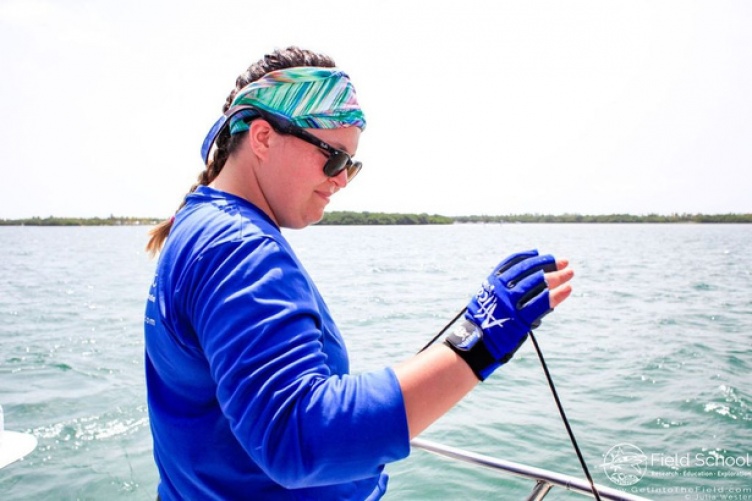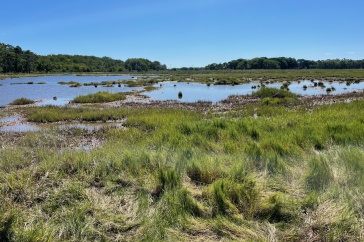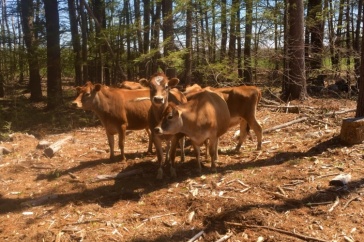
Julia Saltzman in the field collecting data on sawfish.
Julia Saltzman, a graduate student in the UNH College of Life Sciences and Agriculture’s marine biology program, used social media to provide critical information about previously undocumented sawfish encounters. Sawfish have been considered critically endangered since 2003, and there are so few left in the wild, Saltzman says, that they may be starting to reproduce asexually. The results of her research, which suggest social media can be a valuable tool for refining management and conservation campaigns, have been published in Frontiers in Conservation Science.
Although social media has been used by researchers to collect species’ data, Saltzman’s study, which sheds light on human-sawfish interactions and public perceptions of the fish and identifies where they’re most frequently being found throughout the Atlantic Ocean, expands on previously used approaches.
“We added a much more detailed social science component, which is really important because we identified things like target species, compliance behaviors, and trends in language surrounding encounters,” says Saltzman. “With more detailed information, we get better developed outreach, education and management plans.”
By searching Instagram using hashtags #sawfish, #smalltoothsawfish and #sawshark, Saltzman was able to identify 442 documented encounters from 2018 to 2021 along the Florida coastline, with the greatest number of encounters in the Florida Keys. She recorded the post location and whether the poster was an angler, boater, diver or beachgoer.
Saltzman found that despite their low numbers, sawfish were frequently caught as bycatch when other species — like shark, tarpon or bonefish — were being targeted, and even with strict rules prohibiting removing sawfish from the water, in 12.6 percent of cases where they were caught, the sawfish were being directly targeted. Her research also identified handling behaviors by analyzing images and captions and used post captions to assess public attitude toward sawfish, which she found to be generally positive.

“Technically speaking, if you catch a sawfish or see a sawfish, according to Florida law and fishing regulations, you’re supposed to call and report the encounter. And there are a bunch of specific handling practices that you’re supposed to follow during such an encounter,” says Saltzman.
In her published paper, Saltzman proposes a series of outreach campaigns to improve management and handling practices and fill educational gaps, including requiring anyone seeking a boating or fishing license in Florida learn the rules they should follow upon encountering or catching a sawfish, including how to safely release them back into the wild. Safe handling of the sawfish is important for both the fish and the person or people handling the fish due to the sharp rostrum, or snout, which gives the species its name.
Saltzman began researching sawfish on social media during the pandemic when she was an undergrad at the University of Miami. Unable to do any fieldwork, she decided to follow the hashtags for her favorite shark species on Instagram. “I saw anglers catching sawfish and thought, ‘Whoa this is crazy,’” she recalls.
Saltzman came to UNH to strengthen her quantitative research skills and to study under Easton White, assistant professor and quantitative marine ecologist in the department of biological sciences. Her thesis work focuses on sharks and rays in Costa Rica and the eastern tropical Pacific. “I want to ultimately use non-invasive tools and large datasets to inform conservation of marine megafauna — any marine species more than 45 kilograms,” she says.
Although Saltzman doesn’t consider social media a tool to replace complex ecological studies that include tagging and active tracking fauna, her work suggests that it has a useful role to play, nonetheless.
“It can definitely be used to inform and assess the effectiveness of management strategies,” describes Saltzman. “It can be used as, ‘I’m on Instagram, and I saw that this angler caught a sawfish today, maybe that’s where we should go to collect data collection’ approach.”
“But it’s also helpful for capturing the human dimension side in a way that a researcher might not get through an interview or survey,” she adds. “Because it’s important to have as accurate a picture as possible of how people interact with and perceive different species, especially those needing special protection.”
You can read the published article, #Sawfish: Social media to assess public perceptions, behaviors, and attitudes towards a critically endangered species, in the latest issue of Frontiers in Conservation Science.
-
Written By:
Sarah Schaier | College of Life Sciences and Agriculture


















































